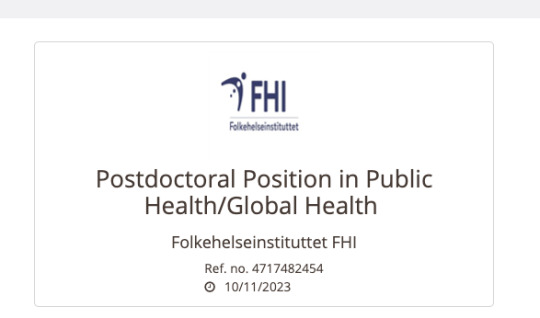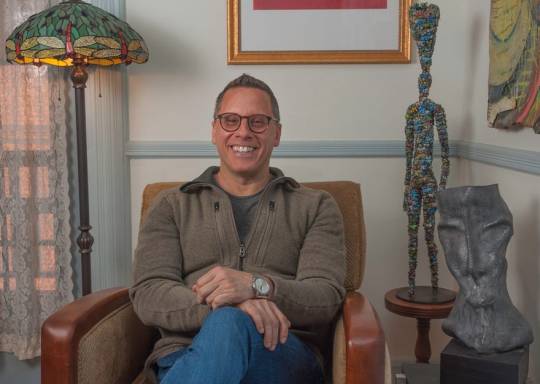#Postdoctoral Fellow
Explore tagged Tumblr posts
Text
#trump administration#badar khan suri#united states#georgetown university#postdoctoral fellow#us immigration and customs enforcement#immigration agents#immigrants#j-1 student visa#india#indian national
0 notes
Text
Subscribe Youtube Channel For New Jobs and Scholarships
Subscribe Youtube Channel For New Jobs and Scholarships

View On WordPress
#Academic Position#academic research#Education#faculty position#Fellowships#Graduate#Jobs#PhD Position#PhD Scholarships#Postdoc#Postdoc Fellowship#Postdoc recruitment#Postdoctoral#Postdoctoral Fellow#research#scholarships#science#Undergraduate
0 notes
Text
Hsu had come from Chekiang University in China in 1948 to take a Ph.D at the University of Texas; now a postdoctoral fellow in human cytology at the medical branch of the university in Galveston, he was looking at cell nuclei in preparations of fetal spleen tissue.
"In the Name of Eugenics: Genetics and the Uses of Human Heredity" - Daniel J. Kevles
#book quote#in the name of eugenics#daniel j kevles#nonfiction#tao-chiuh hsu#tao chiuh hsu#chekiang university#china#40s#1940s#20th century#phd#doctorate#postdoc#postdoctoral fellow#university of texas#cytology#galveston#cells#cell nucleus#nuclei#fetal tissue#spleen
0 notes
Text
Postdoctoral Opportunity in Public Health/Global Health
The Norwegian Institute of Public Health’s vision is better health for all. We produce, summarize and communicate knowledge for the public health sector and healthcare services. Our main activities are emergency preparedness, knowledge and infrastructure. Infrastructure comprises registries, health surveys, biobanks and laboratory services. The Institute is a government organization under the…

View On WordPress
0 notes
Text
An Interview with Dr Bronce Rice
Dr. Bronce Rice takes the spotlight today — armed with years of therapy know-how and more postdoctoral degrees than a bookshelf can handle! After a bit of a break, I recently started publishing interviews that I conducted with interesting writers and healthcare professionals. Each person I interview brings unique experiences and a blend of insights, inspiring us for further exploration. Today,…

View On WordPress
#Dr Bronce Rice#Interviewing a scholarly writer#Picking the Smart Brains of an Exceptional Psychologist and Psychoanalyst#Yale PostDoctoral fellow
0 notes
Text
Learn about the science behind fall foliage with Daniel Hooper, a postdoctoral fellow at the Museum. The next time you’re out leaf peeping or bird watching, give thought to carotenoids—the incredible pigments that make our worlds a little rosier. 🍂🦩🍁
#science#amnh#museum#nature#natural history#fact of the day#did you know#carotenoids#fall#autumn#fall foliage#stem#november#leaf peeping#bird watching#fun facts#ornithology
814 notes
·
View notes
Text
Also preserved in our archive (Daily updates!)
Authors: Rose (Shiqi) Luo Postdoctoral Research Fellow, School of Health and Biomedical Sciences, RMIT University
Catherine Itsiopoulos Professor and Dean, School of Health and Biomedical Sciences, RMIT University
Kate Anderson Vice Chancellor's Senior Research Fellow, RMIT University
Magdalena Plebanski Professor of Immunology, RMIT University
Zhen Zheng Associate Professor, STEM | Health and Biomedical Sciences, RMIT University
____________________________________________________________
Nearly five years into the pandemic, COVID is feeling less central to our daily lives.
But the virus, SARS-CoV-2, is still around, and for many people the effects of an infection can be long-lasting. When symptoms persist for more than three months after the initial COVID infection, this is generally referred to as long COVID.
In September, Grammy-winning Brazilian musician Sérgio Mendes died aged 83 after reportedly having long COVID.
Australian data show 196 deaths were due to the long-term effects of COVID from the beginning of the pandemic up to the end of July 2023.
In the United States, the Centers for Disease Control and Prevention reported 3,544 long-COVID-related deaths from the start of the pandemic up to the end of June 2022.
The symptoms of long COVID – such as fatigue, shortness of breath and “brain fog” – can be debilitating. But can you die from long COVID? The answer is not so simple.
How could long COVID lead to death? There’s still a lot we don’t understand about what causes long COVID. A popular theory is that “zombie” virus fragments may linger in the body and cause inflammation even after the virus has gone, resulting in long-term health problems. Recent research suggests a reservoir of SARS-CoV-2 proteins in the blood might explain why some people experience ongoing symptoms.
We know a serious COVID infection can damage multiple organs. For example, severe COVID can lead to permanent lung dysfunction, persistent heart inflammation, neurological damage and long-term kidney disease.
These issues can in some cases lead to death, either immediately or months or years down the track. But is death beyond the acute phase of infection from one of these causes the direct result of COVID, long COVID, or something else? Whether long COVID can directly cause death continues to be a topic of debate.
Of the 3,544 deaths related to long COVID in the US up to June 2022, the most commonly recorded underlying cause was COVID itself (67.5%). This could mean they died as a result of one of the long-term effects of a COVID infection, such as those mentioned above.
COVID infection was followed by heart disease (8.6%), cancer (2.9%), Alzheimer’s disease (2.7%), lung disease (2.5%), diabetes (2%) and stroke (1.8%). Adults aged 75–84 had the highest rate of death related to long COVID (28.8%).
These findings suggest many of these people died “with” long COVID, rather than from the condition. In other words, long COVID may not be a direct driver of death, but rather a contributor, likely exacerbating existing conditions.
‘Cause of death’ is difficult to define Long COVID is a relatively recent phenomenon, so mortality data for people with this condition are limited.
However, we can draw some insights from the experiences of people with post-viral conditions that have been studied for longer, such as myalgic encephalomyelitis or chronic fatigue syndrome (ME/CFS).
Like long COVID, ME/CFS is a complex condition which can have significant and varied effects on a person’s physical fitness, nutritional status, social engagement, mental health and quality of life.
Some research indicates people with ME/CFS are at increased risk of dying from causes including heart conditions, infections and suicide, that may be triggered or compounded by the debilitating nature of the syndrome.
So what is the emerging data on long COVID telling us about the potential increased risk of death?
Research from 2023 has suggested adults in the US with long COVID were at greater risk of developing heart disease, stroke, lung disease and asthma.
Research has also found long COVID is associated with a higher risk of suicidal ideation (thinking about or planning suicide). This may reflect common symptoms and consequences of long COVID such as sleep problems, fatigue, chronic pain and emotional distress.
But long COVID is more likely to occur in people who have existing health conditions. This makes it challenging to accurately determine how much long COVID contributes to a person’s death.
Research has long revealed reliability issues in cause-of-death reporting, particularly for people with chronic illness.
So what can we conclude? Ultimately, long COVID is a chronic condition that can significantly affect quality of life, mental wellbeing and overall health.
While long COVID is not usually immediately or directly life-threatening, it’s possible it could exacerbate existing conditions, and play a role in a person’s death in this way.
Importantly, many people with long COVID around the world lack access to appropriate support. We need to develop models of care for the optimal management of people with long COVID with a focus on multidisciplinary care.
#mask up#covid#pandemic#public health#wear a mask#covid 19#wear a respirator#still coviding#sars cov 2#coronavirus#long covid
152 notes
·
View notes
Text
Pluto and Charon may have formed through a “kiss and capture” mechanism, with the two icy bodies colliding and becoming temporarily stuck together, spinning in a cosmic dance before separating into two objects that are forever bound in orbit, according to a new study published in Nature Geoscience. “Most planetary collision scenarios are classified as ‘hit and run’ or ‘graze and merge.’ What we’ve discovered is something entirely different—a ‘kiss and capture’ scenario where the bodies collide, stick together briefly and then separate while remaining gravitationally bound,” Adeene Denton, a NASA postdoctoral fellow, and lead author of the study, said in a statement.

-- Sealed with a kiss: The unexpected origin story of Pluto and its moon Charon. Jan 2025
123 notes
·
View notes
Text
Strawberries could be fewer and more expensive because of higher temperatures caused by climate change, according to research from the University of Waterloo. Using a new method of analysis, the researchers found that a rise in temperature of 3 degrees Fahrenheit could reduce strawberry yields by up to 40%. Canada is a major importer of strawberries from California. In 2022, Canadian imports of strawberries from California were worth US$322.8 million. "This research shows how climate change can directly impact the foods we love, emphasizing the importance of sustainable farming practices to maintain a stable food supply for everyone," said Dr. Poornima Unnikrishnan, a postdoctoral fellow in the Department of Systems Design Engineering at Waterloo.
Continue Reading.
118 notes
·
View notes
Text
WHY IS MARS RED??
Blog#484
Saturday, March 1st, 2025.
Welcome back,
Mars has been a subject of fascination for humans due to its unique colour. Nicknamed the 'Red Planet' for its iconic rusty hue, the question is what exactly gives the planet its colour?
Scientists have learned from space orbiters and landers that the rust-coloured dust called ferrihydrite that covers the planet is what gives Mars its red hue, CNN reported. Similar to the process on Earth, when iron in the rocks interacted with water or water and oxygen in the atmosphere on Mars, it created iron oxide.

Martian winds, then, carried the iron oxide across Mars over billions of years, breaking it down into dust and giving the planet its signature colour.
Since Mars no longer has liquid water, scientists previously believed that its rust-red colour came from dry iron oxides like hematite in the dust. However, according to a new analysis of satellite data and laboratory procedures, ferrihydrite might be a better explanation for the planet's red colour.

"The fundamental question of why Mars is red has been pondered for hundreds, if not thousands, of years," said Adomas Valantinas, a lead author and a postdoctoral fellow in the Department of Earth, environmental and planetary sciences at Brown University, as per USA Today.
He added, "Mars is still the Red Planet. It's just that our understanding of why Mars is red has been transformed."

Ferrihydrite's identification as a major constituent of Martian dust may have significant implications for our knowledge of Mars' past and the potential for extraterrestrial life. According to Valantinas, ferrihydrite's existence on Mars indicates that the planet originally had a liquid water environment, which is essential for life.

Study co-author Jack Mustard said that the research offers a "door-opening opportunity". He emphasised that although the results were encouraging, they could only be verified with actual samples taken from Mars.
Originally published on https://www.ndtv.com
COMING UP!!
(Wednesday, March 5th, 2025)
"WHY IS NEBULA CALLED STELLAR NURSERY??"
#astronomy#outer space#alternate universe#astrophysics#universe#spacecraft#white universe#space#parallel universe#astrophotography
30 notes
·
View notes
Text

Off-the-shelf thermoelectric generators can upgrade CO₂ into useful chemicals, which could aid Mars colonization
Readily available thermoelectric generators operating under modest temperature differences can power CO2 conversion, according to a proof-of-concept study by chemists at the University of British Columbia (UBC). The findings open up the intriguing possibility that the temperature differentials encountered in an array of environments—from a typical geothermal installation on Earth to the cold, desolate surface of Mars—could power the conversion of CO2 into a range of useful fuels and chemicals. "The environment on Mars really got me interested in the long-term potential of this technology combination," says Dr. Abhishek Soni, postdoctoral research fellow at UBC and first author of the paper published in Device. "This is a harsh environment where large temperature differences could be leveraged to not only generate power with thermoelectric generators, but to convert the abundant CO2 in Mars' atmosphere into useful products that could supply a colony."
Read more.
18 notes
·
View notes
Text
Good lord I take a week off of tumblr and now there’s a lot of you
Hello to everyone who’s just followed me in the past week! Most of you have come from a long ramble of mine on interdisciplinary learning, medieval head trauma, and Gallus’ well-wishings on my recent graduation (https://www.tumblr.com/gallusrostromegalus/727017193756327936), thank you to Gallus for that. Thank you to those of you who’ve commented with kind words as well. Specific shout-outs, links to relevant rambles, and questions are below, in the section “Link Roundup and Shoutouts”.
Yes, this is a post with sections. This is how we roll here.
Introduction to Spider
For those who don’t know, I’m Spider! I’ve just gotten my PhD in Mammalian Genetics, having gotten a Masters in Informatics and a Bachelors in Medieval Studies before that. I’ll quite happily ramble about any of them, with the following caveats: an undergraduate degree means I know the basics, but they may be increasingly out of date. And advanced degrees are increasingly specialized in their scope as you go along—you gain the skills to more easily understand things from related specialties, but you only become truly, deeply knowledgeable on very specific topics. However, these topics are not always limited to the field of study generally expected by the degree-granting institution! My focus ended up being significantly divergent from everyone else’s, which resulted in an interesting challenge of communicating my project to others at the institute.
The field I dove into for my PhD was systems genetics. Rather than studying individual genes and how they function, my work examined the wider view: think the difference between a local weather forecast versus modeling the global climate. Both synthesize vast amounts of information, just on different scales and levels of detail.
Many people love studying the tiny details around individual genes, because they can dig down into the mechanisms that make the gene work, how it might break and cause disease, and maybe how to fix those diseases. My love is for the global view of things, which gives you the ability to characterize general statements about how genes are regulated and modified. It’s a field that’s very hard to study without good data that’s complicated to acquire, so it’s a very exciting subject to work on! I’m looking forward to carrying that on into a postdoctoral study, in which I’ll work with a new lab and learn the dreaded skill of grant writing. I’ll be starting this month!
…As Gallus mentioned, my time until then is very much devoted to Baldur’s Gate 3. Happily for me, the new research group I’ll be joining has also been going nuts for Baldur’s Gate 3, so I’ll have a lot to talk about with my coworkers once I’m back to the lab.
In my free time, I’m happy to ramble upon request about the subjects I love, including but not limited to my fields of academic study, my constructed language hobby, scientific ethics and its portrayal in media, creepy-crawlies (always appropriately tagged for people’s phobias), and Baldur’s Gate 3.
…Lots of Baldur’s Gate 3. (I’ve only just reached the Lost Light Inn, please no spoilers!)
Link Roundup and Shoutouts
For those who are interested to see my ramble about why European medical texts in the medieval period tended to be terrible, it’s available here: https://www.tumblr.com/cellarspider/680342023316930560/hi-please-rant-about-medieval-european-medical
Thank you to all those who dug up the name of the academic text I’d forgotten! Its title, in all its wordy glory, is Injuries of the skull and brain, as described in the myths, legends, and folk-tales of the various peoples of the world, with some comments on the significance and reliability of this information in evaluating contemporary concepts as to their nature and lethality by Cyril B. Courville, 1967. It’s a fantastic book, and good lord that title just does not stop
Thank you to fellow spiders @one-spider-from-mars and @vaspider for their comments. We are many. We are mighty.
Thank you to @belovedbright for the fantastic story of the death of Conchobar mac Nessa via brain trauma inflicted by a brain https://www.tumblr.com/belovedbright/727132485919604736
To @doomhamster's question on whether egg whites were used in the medieval treatment of burns: I don’t know! Unfortunately I can’t access the translation of the medical manual I referred to back then (https://worldcat.org/title/1123716578), and the only version I can find online at the moment is in 14th century French (https://www.bl.uk/manuscripts/FullDisplay.aspx?ref=Sloane_MS_1977). Egg whites do appear 33 times in the translation, according to the limited ability I have to search the text, and they show up throughout the book.
#spider rambles far too much#good lord there's a lot of you#hello everyone#I guess this is my intro post now
150 notes
·
View notes
Text
Kyle Cheney and Josh Gerstein at Politico:
A Georgetown University researcher, who was studying and teaching on a student visa, has been detained by federal immigration authorities amid the Trump administration’s crackdown on student activists whom the government accuses of opposing American foreign policy, according to court papers. Masked agents arrested Badar Khan Suri, an Indian national and postdoctoral fellow, outside his home in the Rosslyn neighborhood of Arlington, Virginia, on Monday night, his lawyer said in a lawsuit fighting for his immediate release. The agents identified themselves as being with the Department of Homeland Security and told him the government had revoked his visa, the lawsuit says. According to Suri’s petition for release, he was put in deportation proceedings under the same rarely used provision of immigration law that the government has invoked to try to deport Mahmoud Khalil, the Columbia University graduate student and green card holder who led pro-Palestinian protests on campus. That provision gives the secretary of State the power to deport noncitizens if the secretary determines that their continued presence in the U.S. would threaten foreign policy. Suri has no criminal record and has not been charged with a crime, his petition says. His detention and petition have not been previously reported. Suri’s lawyer, Hassan Ahmad, argued in his petition that Suri is being punished because of the Palestinian heritage of his wife — who is a U.S. citizen — and because the government suspects that he and his wife oppose U.S. foreign policy toward Israel. The petition says the couple has “long been doxxed and smeared” on anonymously run, far-right websites due to their support for Palestinian rights. The petition also says that Suri’s wife, Mapheze Saleh, has been alleged to have “ties with Hamas” and once worked for Al Jazeera. A 2018 article about the couple published in the Hindustan Times, an Indian newspaper, said Saleh’s father, Ahmed Yousef, served as a “senior political adviser to the Hamas leadership.” Department of Homeland Security spokesperson Tricia McLaughlin confirmed that Secretary of State Marco Rubio issued a determination on Saturday that Suri’s visa should be canceled for foreign policy reasons. “Suri was a foreign exchange student at Georgetown University actively spreading Hamas propaganda and promoting antisemitism on social media,” McLaughlin wrote on X. “Suri has close connections to a known or suspected terrorist, who is a senior advisor to Hamas.”
[...] Suri’s detention is the latest in a string of immigration-related arrests that Trump says are just beginning to ramp up. The arrests, Trump says, target “terrorist sympathizers” or people who have “engaged in pro-terrorist, anti-Semitic, anti-American activity.” But advocates for these detainees say Trump is violating the First Amendment by retaliating against noncitizens — including people in the country legally — based on their political views and free speech. Suri’s lawsuit was filed in federal court in Alexandria, Virginia, on Tuesday. As is typical for petitions seeking “habeas corpus,” or release from unlawful detention, the court papers were not available on the court’s online docket. POLITICO obtained a paper copy of Suri’s petition from the court.
The Trump Misadministration’s war on pro-Palestine Americans and their speech has escalated, as Georgetown University graduate student Badar Khan Suri was unlawfully detained on the bogus basis of “spreading Hamas propaganda.”
See Also:
Reuters, via The Guardian: Trump administration attempting to deport pro-Palestinian student at Georgetown University
10 notes
·
View notes
Text

Research alert! A new study, led by scientists from the Museum and the City University of New York, on the eruption of the Cumbre Vieja volcano in Spain’s Canary Islands suggests that on-the-ground volcanic ash studies could be used as a near-real-time monitoring and forecasting tool.
Cumbre Vieja had been dormant for 50 years when it started erupting in the fall of 2021. Samantha Tramontano, a Kathryn W. Davis Postdoctoral Fellow at the Museum and a faculty member in the Master of Arts in Teaching program, was a student at CUNY at the time and had the rare chance to implement a system to collect the volcanic ash produced by the eruption along with her advisor, CUNY’s Marc-Antoine Longpré. For three months in 2021, a team from the Museum, CUNY, and Spanish geologic agencies collected falling ash in buckets and carefully labeled the daily samples for future chemical analysis. The samples were sent back to the Museum for study with an electron microprobe.
The research team, which published their work in the journal Nature Geoscience last week, is the first to capture daily changes in melt chemistry at an active volcano. Read about their findings in our latest blog post.
#science#amnh#museum#nature#natural history#fact of the day#did you know#research#stem#volcanoes#volcano#geology#volcanology#earth science#canary islands#spain
259 notes
·
View notes